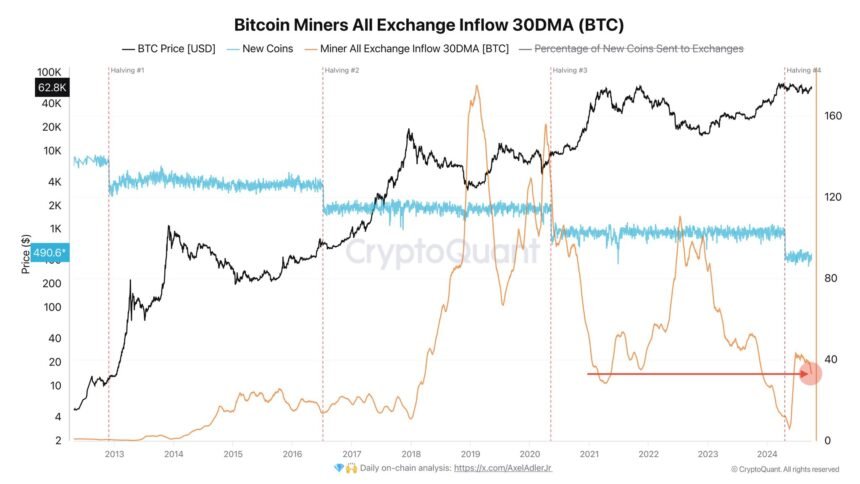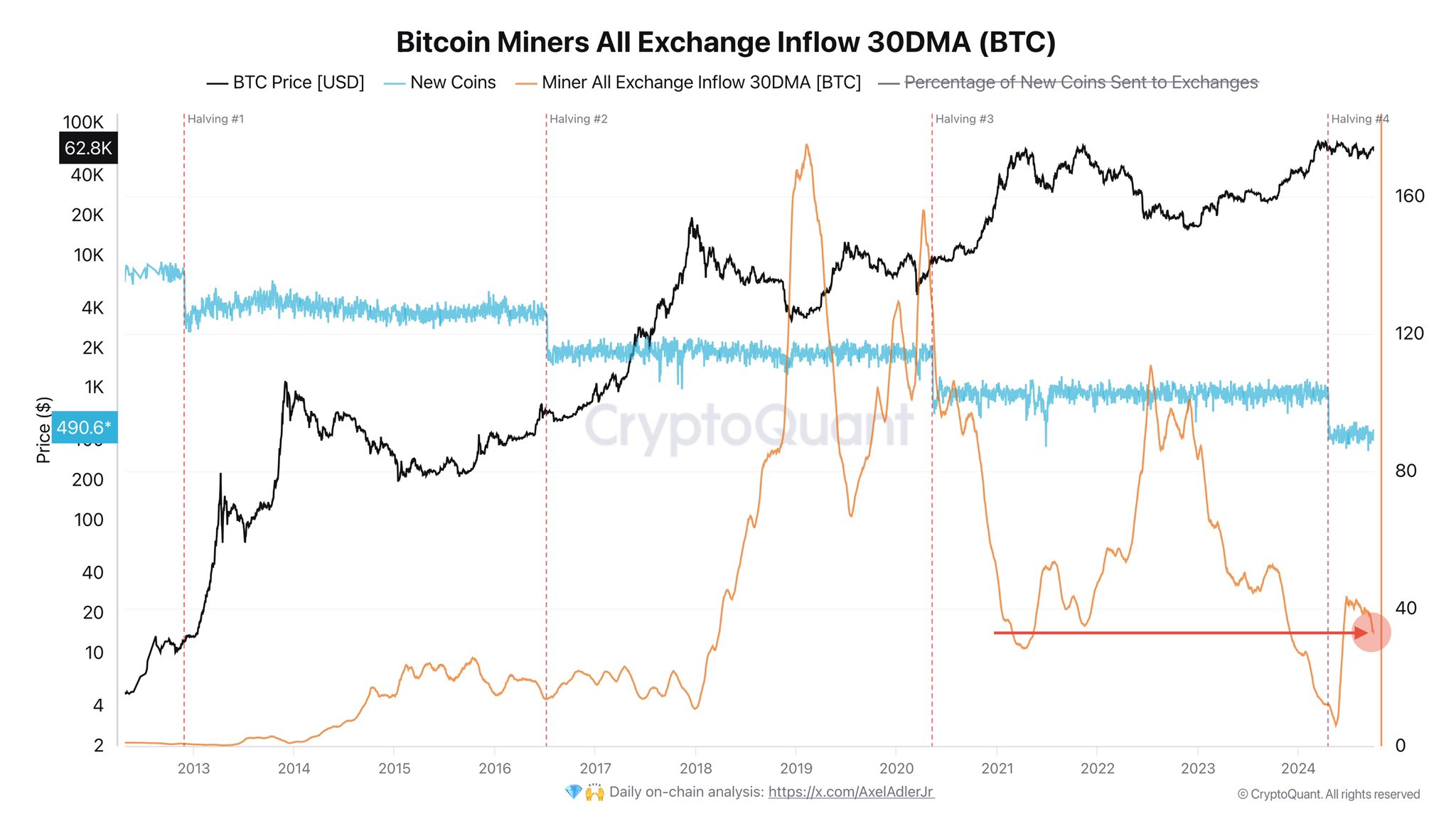Recent on-chain data indicates that inflows from Bitcoin miners to exchanges have been declining, which could be a bullish indicator for the asset’s price.
Decline in Bitcoin Miner Exchange Inflows Observed
As noted by CryptoQuant author Axel Adler Jr in a new post on X, there has been a gradual reduction in miners’ exchange inflows. “Exchange inflows” refer specifically to transactions moving from self-custodial addresses to wallets linked to centralized exchanges.
In this context, the focus is primarily on the inflows coming from miner-related wallets. Typically, miners transfer assets to these platforms for selling purposes, so significant inflows from miners can indicate that these participants are engaging in a selloff.
Miners incur ongoing expenses, mainly related to electricity costs, making periodic selling a necessity to maintain their operations.
This consistent selling often occurs at a scale manageable by the market, which generally means no noticeable adverse impact on the asset’s price. However, large and sustained exchange inflows can be significant as they may signal atypical selling pressure from this group.
Below is the chart provided by the analyst, illustrating the trend in the 30-day moving average (MA) of Bitcoin miner exchange inflows throughout the history of the cryptocurrency:
The graph indicates that the 30-day MA of Bitcoin miner exchange inflows dropped to low levels in the early part of the year before experiencing a significant reversal.
This increase may be attributed to the fourth Halving event that took place in April. Halvings are periodic events occurring approximately every four years that permanently halve the BTC block subsidy.
The chart also includes data on coin issuance in the network (shown in blue). This metric clearly illustrates the impact of the Halving, as miners can only generate about half as many coins after each event compared to before.
Miners typically earn revenue from two primary sources: transaction fees and block subsidies, with the latter generally accounting for the majority of their income. Consequently, miners rely heavily on block subsidies for their earnings.
Following the latest Halving, miners faced substantial pressure as their revenue experienced a dramatic decline. The trend in exchange inflows suggests that these validators may be liquidating their reserves in response to the reduced income.
While high inflows from miners persisted for some time, there has been a recent reversal in the 30-day MA of their exchange inflow, which could indicate that this group is beginning to reduce their selling activities. If this becomes a sustained trend, it could positively influence the cryptocurrency’s price.
Current BTC Price
Bitcoin has retraced much of its recent gains over the past few days, with its price now sitting at $60,300.









